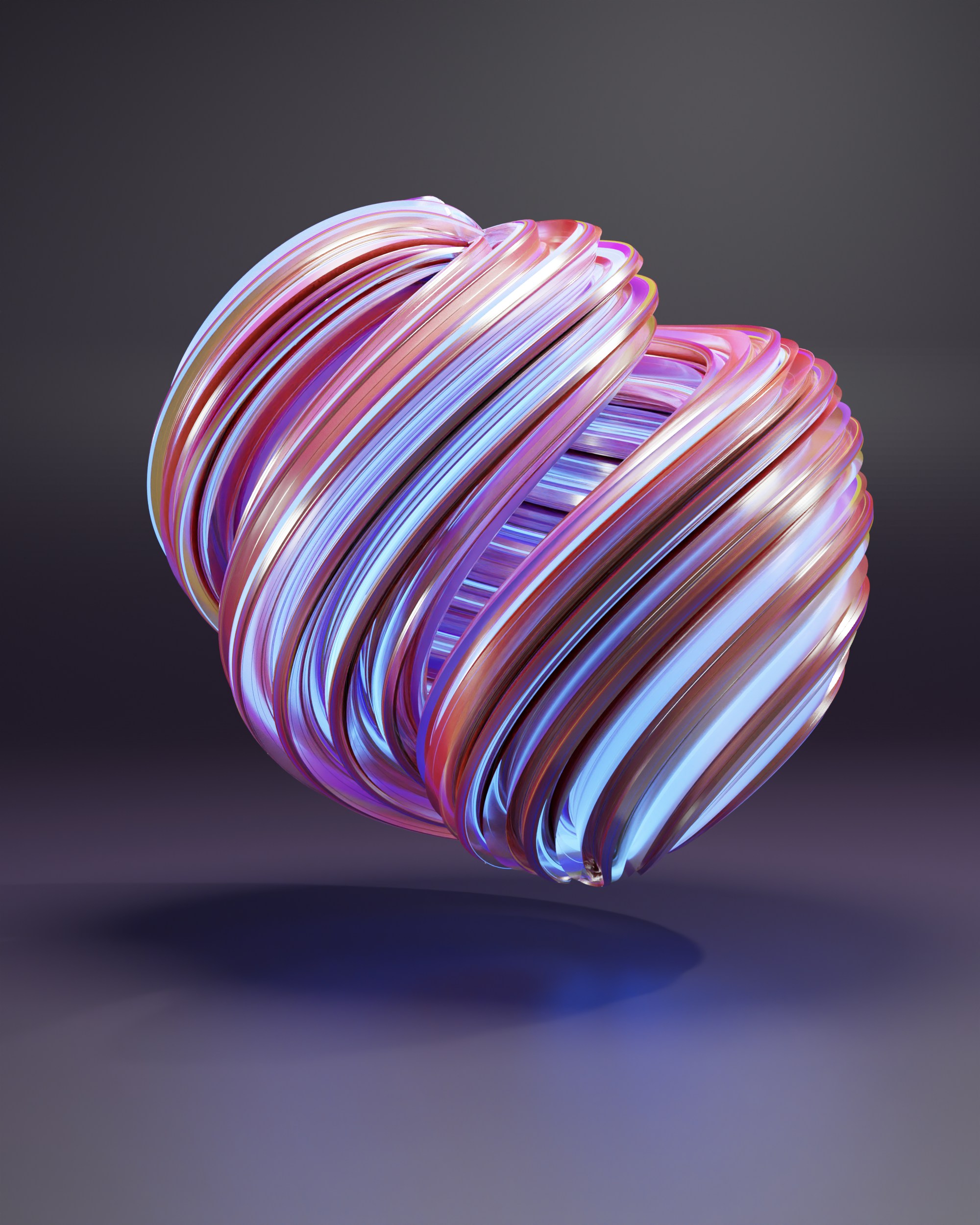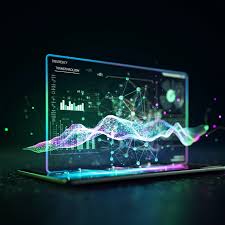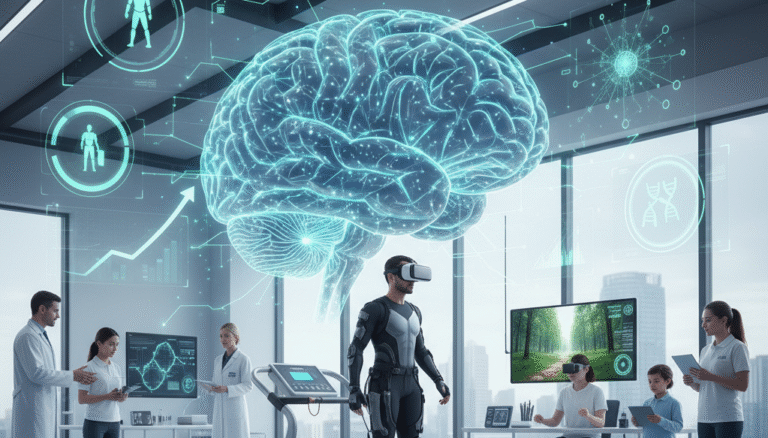
Photo by <a href="https://unsplash.com/@designingsucks" rel="nofollow">Nikhil Dafare</a> on <a href="https://unsplash.com/?utm_source=hostinger&utm_medium=referral" rel="nofollow">Unsplash</a>
Introduction to AI Art in Horror
The emergence of artificial intelligence (AI) has revolutionized numerous creative industries, and the realm of art is no exception. AI-generated art is making significant strides, particularly in the horror genre, where it serves as a powerful tool for igniting visceral emotions. Utilizing advanced algorithms and machine learning techniques, creators can produce unsettling imagery that marries technology with the inherent psychological complexities of fear.
AI art, particularly in horror, leverages computational power to explore themes that resonate deeply with human anxieties. By analyzing vast datasets of existing horror visuals, these intelligent systems can generate images that reflect a diverse array of horrors—from the grotesque to the surreal. This capability allows artists to push boundaries and delve into darker narratives, thereby crafting a profound experience for viewers. The integration of technology here not only enhances the aesthetic appeal of horror art but also invites audiences to confront their deepest fears through a unique lens.
Moreover, the psychological roots of fear play a critical role in the effectiveness of AI-generated horror art. The mediums employed evoke primal emotions, tapping into archetypes and symbols that have haunted humanity for centuries. The unsettling nature of AI creations amplifies these emotions, drawing viewers into a world where their imaginations run wild. These innovations offer a fresh perspective on the horror genre, enriching the art form by adding layers of complexity and intrigue. As technology continues to evolve, the potential for AI art in horror remains vast, opening up new avenues for exploration and expression in this ever-compelling genre.
Understanding Horror IV Needles: An Overview
The motif of IV needles in horror art represents a profound intersection of medical imagery and psychological discomfort. IV needles, often associated with medical treatment and care, paradoxically evoke feelings of dread and vulnerability. This duality lies at the heart of their power as symbols in the horror genre, where the familiar becomes unsettling. In contexts of health anxieties, the mere sight of these instruments can trigger a visceral reaction, positioning them as icons of fear that delve into our collective unease surrounding medical procedures and the unknown.
In literature, authors frequently utilize IV needles to articulate themes of trauma and helplessness. For instance, in horror narratives, characters may find themselves incapacitated or subjected to invasive treatments, symbolizing a loss of agency amid overwhelming circumstances. These representations compel readers to confront their own fears of medical dependency and vulnerability, amplifying the horror elements embedded in the storyline. The trauma associated with needles can channel deeper societal concerns about healthcare systems, personal health crises, and the unpredictability of medical outcomes.
Visual artists also harness the symbolic weight of IV needles to provoke a similar response. Artwork that incorporates these images can evoke a spectrum of emotions ranging from anxiety to existential dread. A notable example includes contemporary installations that juxtapose IV needles with imagery of decay or violence, reinforcing themes of mortality and the fragility of life. Furthermore, this motif prompts discussions surrounding the stigma related to medical interventions, addiction, and the psychological scars left by physical experiences in clinical settings.
Ultimately, the representation of IV needles in horror art transcends mere visual impact. It encapsulates a cultural critique of our relationships with health and illness, elevating the horror experience into a profound exploration of fear, trauma, and the unknown.
The Role of AI in Creating Horror Art
Artificial Intelligence (AI) has become a significant tool in the realm of art, particularly in the development of horror art, where its capabilities can create unsettling and immersive experiences. One of the most prevalent technologies employed in this context is Generative Adversarial Networks (GANs). GANs consist of two neural networks: the generator, which creates images, and the discriminator, which evaluates them. This interplay allows for the production of increasingly refined visuals that can evoke the eerie and grotesque, quintessential elements of horror art.
The use of GANs opens up new creative avenues for artists willing to explore the darker facets of their imagination. By leveraging this technology, artists can generate chilling imagery that challenges conventional aesthetics. The portrayal of unsettling subjects, such as IV needles in horror art, demonstrates how AI can conjure visuals that provoke visceral reactions. The surrealism achieved through AI-generated imagery invites viewers to confront their fears and anxieties, thus deepening the horror experience.
Moreover, AI art tools can analyze vast datasets of existing horror art, drawing upon established themes and styles to create unique compositions. This ability to learn from and mimic existing works, while introducing novel elements, allows for a hybrid approach to artistic creation. However, there are limitations to consider. While AI can generate striking visuals, it often lacks the emotional depth and narrative coherence often inherent in human-created art. The subtleties of human experience, fear, and trauma are complicated to reproduce within an algorithmic framework.
Ultimately, the role of AI in horror art represents a fascinating convergence of technology and creativity. While it offers exciting possibilities for artistic exploration, it also raises questions about the authenticity and emotional resonance of machine-generated works. The ongoing dialogue between artists and AI will shape the future of horror aesthetics, inviting further investigation into what constitutes true horror in art.
Case Studies of AI Horror Art Featuring IV Needles
Within the realm of AI-generated horror art, certain pieces stand out for their unsettling yet thought-provoking depictions of IV needles. These case studies examine the work of various artists who leverage artificial intelligence to explore themes of fear, vulnerability, and the macabre. Each piece serves as a powerful commentary on the human condition, the fragility of life, and our relationship with medical technology.
One notable case is the piece titled “Infusion of Shadows” by digital artist Alex Tremont. This artwork employs AI algorithms to generate an eerie atmosphere, dominated by the presence of IV needles amidst dark, shadowy figures. Tremont’s intention was to evoke feelings of dread associated with medical procedures, exploring the intersection of life and death. The reception of this piece was largely positive, with viewers highlighting the visceral emotions it elicits, prompting discussions about the implications of invasive medical technologies in today’s society.
Another compelling example is “Veins of Woe” by emerging artist Rita Chen. Utilizing deep learning techniques, Chen created an artwork that immerses the viewer in a nightmarish landscape where IV needles sprout like grotesque plants. The execution demonstrates a mastery of color contrast and eerie composition, successfully capturing the unsettling nature of dependency on medical devices. Audience reception has been varied, with some finding the piece haunting yet beautiful, while others express discomfort at its portrayal of vulnerability and crisis.
In contrast, the collaborative project “Needle Nightmares” showcases contributions from multiple artists, each interpreting the theme through their unique lens. This collection features a range of styles, from hyper-realistic to abstract renditions of IV needles, utilizing AI to extend creative boundaries. The project has sparked significant interest, emphasizing the diverse approaches artists take in addressing horror, particularly in the context of human frailty and medical intervention.
Through these case studies, we glean insight into how AI can amplify the narrative surrounding horror art, effectively engaging audiences in conversations about contemporary fears intertwined with technology. Each work profoundly resonates by merging innovative AI techniques with thematic depth, inviting viewers to confront the unsettling realities of our ongoing interaction with healthcare.
Viewer Perception: Understanding the Fear Response
The intersection of horror art and psychological responses can elicit profound reactions from viewers, particularly concerning imagery that evokes fear and discomfort. The portrayal of IV needles in horror art is a powerful example of how certain visual stimuli can trigger visceral reactions. Theories of fear response, such as the James-Lange theory which posits that physiological responses precede emotional experiences, underscore how viewing disconcerting images activates the body’s fight-or-flight mechanisms. When individuals encounter horror art, particularly those containing elements like IV needles, the initial physiological response often manifests as heightened anxiety or even dread.
The allure of horror largely lies in its capacity to tap into primal fears surrounding vulnerability and bodily harm. Within this context, IV needles, which symbolize both medical care and potential danger, provoke a duality of emotions. They can evoke feelings of helplessness akin to being at the mercy of medical interventions, which can be unsettling. This complexity is compounded when artificial intelligence generates horror art, as the surreal quality of AI-generated visuals amplifies the uncanny aspects of horror. The dissonance between the familiar and the eerie enhances viewer interpretations, often leading to an unsettling sense of realism that intensifies fear.
Moreover, cultural dialogues surrounding horror art and imagery such as IV needles facilitate a deeper understanding of societal fears and anxieties, particularly within the context of health, dependence, and control. Audience member experiences can vary markedly based on personal histories, cultural backgrounds, and psychological resilience. Thus, horror art not only reflects individual psychological reactions but also serves as a mirror to broader societal issues, inviting an exploration of collective fears that transcends personal experiences. The confluence of AI art and horror creates a unique avenue for this exploration, engaging viewers in a dialogue that is both unsettling and transformative.
Ethical Considerations in AI Horror Art
The advent of artificial intelligence (AI) in the realm of art, particularly in genres like horror, raises significant ethical challenges. One key issue revolves around the ownership of AI-generated creations. Unlike traditional art, where the creator’s intent and personal touch are evident, AI-generated pieces often result from complex algorithms that interpret vast datasets. This ambiguity raises questions about authorship. Who is the true creator of such artworks? Is it the programmer, the user directing the AI, or the AI itself? This ambiguity necessitates a legal and ethical framework that addresses copyright and intellectual property in the context of AI-generated content.
Furthermore, AI has the potential to unintentionally propagate harmful stereotypes or irrational fears by utilizing biased training datasets. In horror art, this could manifest in the reinforcement of negative portrayals of specific groups or exaggerated representations of certain fears. For instance, while exploring horror themes, artists must be cognizant of how AI might generate images that resonate with existing prejudices or stigmas. The implications of reproducing these stereotypes are profound, as they can cement harmful narratives within society, thereby negatively impacting perceptions and societal dynamics.
Moreover, the use of sensitive medical imagery in horror art raises additional ethical considerations. While such representations can be artistically powerful, there is a fine line between artistic expression and exploitation. Portraying medical scenarios involving suffering can evoke intense emotions but may also distress audiences, particularly those with personal experiences related to the themes depicted. Artists bear a responsibility towards their audiences, necessitating thoughtful consideration of the content they are creating. As the intersection of AI and horror art continues to evolve, it remains critical for creators to engage in self-reflection, ensuring that their work respects the values and sensitivities of their viewers.
Future Trends in AI Horror Art
The landscape of AI horror art is poised for transformative changes that will redefine how audiences experience fear through digital mediums. As artificial intelligence continues to evolve, it will bring forth new innovations that enhance both the aesthetic and emotional impact of horror-themed artworks. One anticipated trend is the increasing use of generative adversarial networks (GANs) to create hyper-realistic images that can evoke a profound sense of dread. The enhanced realism achieved through such technology could make horror art not only visually captivating but also psychologically unsettling, delivering a more immersive experience for viewers.
Moreover, we can expect that AI will enable artists to explore emerging themes within the horror genre. Concepts such as existential dread, technological anxiety, and the uncanny valley will likely become focal points in new works. As societal fears evolve, AI-generated horror art may reflect these anxieties, allowing for a deeper commentary on contemporary issues. For instance, AI could analyze social media trends and generate art that embodies collective fears, resonating with an audience that is increasingly engaged in discussions about technology and its implications for society.
Another exciting avenue for AI horror art is interactivity. Future innovations may lead to experiences where viewers can influence the narrative or visual elements of a piece, thus creating a dynamic relationship between the art and its audience. This shift towards interactive horror experiences will not only heighten engagement but also challenge traditional notions of authorship and creativity. Artists may become facilitators of experiences rather than sole creators of fixed works, leading to a collaborative exploration of fear.
In conclusion, the future of AI horror art holds immense potential for innovation, thematic exploration, and audience interaction. As technology advances, so too will the ways in which horror is expressed, experienced, and understood, promising to keep the genre both relevant and unsettlingly fresh.
Comparative Analysis: Traditional vs. AI Horror Art
Art has long served as a medium to explore the depths of human emotion, and within the horror genre, it has the unique capability to evoke strong feelings of fear and unease. Traditional horror art techniques often rely on time-honored methods such as painting, drawing, or sculpting, utilizing physical tools to create imagery that unsettles viewers. Artists employing these techniques harness their skills honed over years, integrating their personal experiences and emotional responses to craft haunting visuals that resonate with an audience. The tactile nature of traditional art allows for the development of distinctive aesthetics, where brush strokes and material choices contribute significantly to the final piece’s emotional weight.
Conversely, the rise of artificial intelligence in the creation of horror art brings about a novel approach rooted in algorithmic processes and data analysis. AI-generated horrors can be produced rapidly, offering an extensive range of styles and variations that are difficult to achieve through traditional methods. This expansion opens up new avenues for creativity, enabling artists to explore unconventional themes and provoke reactions in unexpected ways. While the emotional impact of AI-generated pieces can be compelling, it often lacks the deeply personal imprint characteristic of traditional artworks, potentially leading to a more sterile interpretation of horror aesthetics.
In terms of the creative process, traditional artists engage in a dialog with their materials and audiences, channeling their fears and anxieties into tangible forms. In contrast, AI art operates through patterns identified in existing works, challenging the conventional notion of the artist’s role. Some may argue that while AI can analyze and recreate elements of horror, it does not truly ‘understand’ fear or the human condition. This distinction raises critical questions about authorship and creativity, particularly in how both mediums interpret horror themes, engage their audiences, and generate visceral reactions. The dichotomy between traditional and AI horror art ultimately showcases the diverse methods of inciting fear, each with its own merits and limitations.
Conclusion: The Evolving Landscape of Horror Art
As we delve into the realm of AI-generated horror art, particularly through the lens of unsettling motifs such as IV needles, it becomes clear that this intersection of technology and creativity is reshaping our understanding of the horror genre. The evolution of horror art has always reflected societal fears, and the advent of artificial intelligence introduces a fresh dimension to these age-old anxieties. The ability of AI to generate imagery that evokes fear provides artists with powerful tools to explore themes of vulnerability and menace, which resonate deeply within our collective psyche.
The integration of AI in artistic practices does not merely simplify the process of creation; it redefines the relationship between artist, audience, and medium. As horror art becomes entwined with technology, it challenges traditional notions of authorship and originality. Viewers may find themselves navigating a complex dialogue—all while confronting their own discomfort about the technology that shapes the narratives of fear. This sophisticated interaction generates an intriguing tension that enhances the emotional experience of horror art. Furthermore, the capacity of AI to manipulate and generate imagery quickly allows for the exploration of various phobias and traumatic experiences, effectively broadening the scope of the horror genre.
Looking ahead, the dialogue between AI and horror art is set to evolve further, inviting continuous examination of how technology can illuminate the human condition’s darker aspects. As artists continue to harness AI’s capabilities, we may witness an emergence of new aesthetic forms that delve deeper into the complexities of fear, producing compelling works that facilitate discussions about morality, technology, and human vulnerability. In conclusion, the integration of AI within the landscape of horror art is not merely an innovative trend; it represents a significant shift in how we conceptualize fear and its representation, indicating a profound potential for future exploration of unsettling aesthetics.




